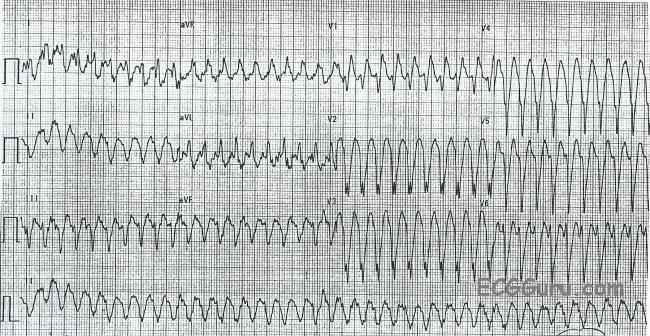

The most commonly used classes of medications are: Medications may be used to treat many patients with SVT. How Is Supraventricular Tachycardia Treated? Atrial tachycardias occur when localized regions in the atria develop the ability to fire rapidly on their own. Some patients are told that they have Wolff-Parkinson-White Syndrome (WPW), in which there is evidence of conduction via an accessory pathway from the atrium to the ventricle that may be detected on the ECG even if they are not experiencing SVT. The electrical impulse travels down the AV node to the ventricle and back to the atrium via these extra fibers, producing the SVT called AV reentrant tachycardia, or AVRT ( Figure 3). Another type of SVT occurs because of electrical conduction via extra fibers between the atria and ventricles this means of conduction is called a bypass tract or accessory pathway. One type of SVT (AV nodal reentrant tachycardia or AVNRT) occurs because the electrical impulse travels in a circle using extra fibers in and around the AV node ( Figure 2). How Is Supraventricular Tachycardia Classified?Īn SVT is classified medically on the basis of the path that the electrical signal takes from the atria. The loop monitor record is downloaded using a telephone in the same way that event monitor data are transmitted. This permits recording even very transient arrhythmias. The loop monitor continuously records the heart’s rhythm so that the patient need only press a button to save a record of the rhythm during the preceding and subsequent 1 to 2 minutes. In such cases, patients may wear a loop monitor continuously for days to weeks. For patients who experience very brief arrhythmias or those accompanied by severe lightheadedness, an event monitor is impractical.
#Supraventricular tachycardia with ivcd how to
The patient is given instructions about how to download this information to a computer that stores results for later analysis via a special device placed over a telephone mouthpiece. Activating a button on the monitor will start a recording of the heart’s rhythm. An event monitor is attached to the patient’s wrist or chest whenever symptoms suggesting SVT occur. For those patients whose arrhythmias occur relatively infrequently, event or loop monitors may be worn. This type of monitor is particularly helpful in documenting asymptomatic or very frequent rhythm abnormalities. A 24-hour ambulatory Holter monitor may be used to record the heart rhythm continuously for 24 hours. Various other types of electrocardiographic monitors may be used to record the patient’s heart rhythm to help make a diagnosis of SVT.


If the patient is experiencing SVT during the ECG, a clear diagnosis can be made. The electrocardiogram (ECG or EKG) provides a picture of the heart rhythm and is recorded by placing adhesive or gel pads on the chest and limbs. How Is Supraventricular Tachycardia Diagnosed? Customer Service and Ordering Information.Stroke: Vascular and Interventional Neurology.Journal of the American Heart Association (JAHA).Circ: Cardiovascular Quality & Outcomes.Arteriosclerosis, Thrombosis, and Vascular Biology (ATVB).Wrong picks will buzz your iPhone / iPad and give you a minus score. The test need you to pick all interpretations, to get a 3-star rate. The app is very challenging because it uses REAL patients' ECG recordings, and many of them are complicated with multiple diseases involved. "Awesome app!!! Worth the download and perfect for studying!" "Professional ecg app with nice monitor display" "This app is great for anyone learning how to read an EKG" "This collection of ECGs designed as realtime display is an essential app for every medical practitioner." It's a good way to look at the whole picture and put your interpretation skills to the test."

"Using this as a study guide for my paramedic. Test and improve your ECG interpreting skills with 1000+ samples in static images, and real-time monitor.


 0 kommentar(er)
0 kommentar(er)
